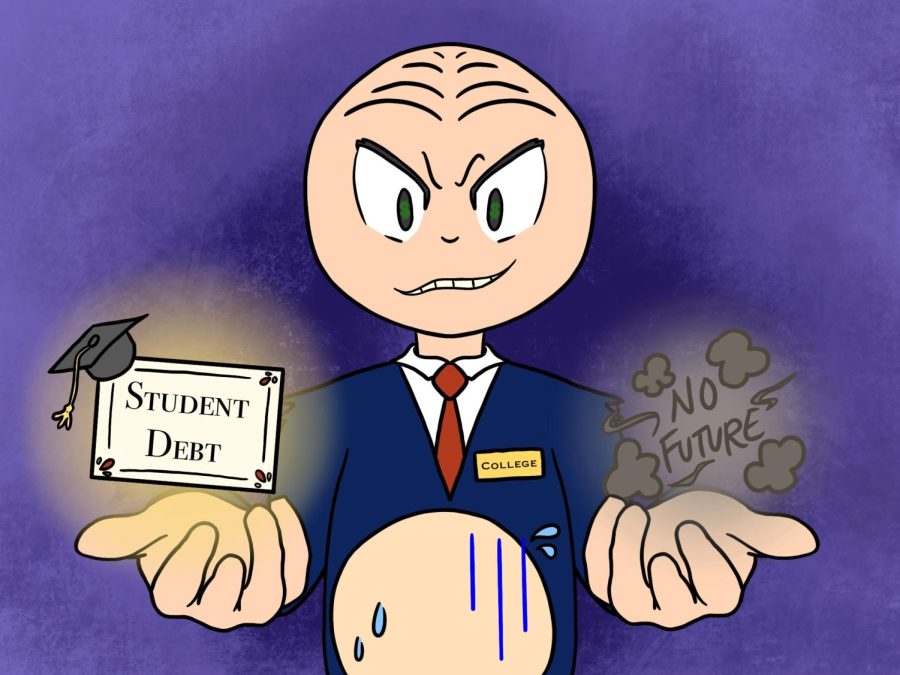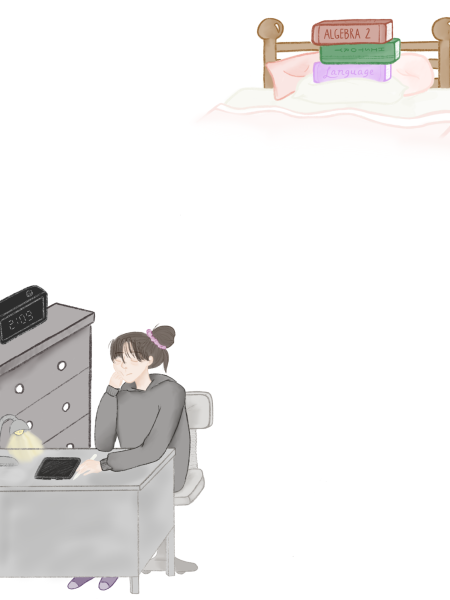The Financial Inefficiency in American Higher Education
Nowadays, attending college is seen as the norm, rather than as a privilege only a few get to enjoy. This changing perception is attributed to a highly competitive workforce where everyone is expected to have received a college degree. In fact, this expectation has begun to influence all spheres of life. Despite the increasing number of students choosing to attend college, reasonable financial support for low-income students has not been established yet. The financial burden that comes with pursuing a degree in the United States indicates that education has transformed itself from a means of social uplift into a capitalist business model. This is perhaps most evident in the Ivy League. The careful branding of names such as Harvard, Yale and Princeton lends an air of credibility and prestige to the small cohort of students graduating from these elite universities. Some may argue that the elitism and power that comes with these schools (most often attended by wealthy, white, highly-connected individuals) forces those born without similar means to take on crippling debt in order to receive an education. So, is the brand name really worth the associated financial struggles?
Receiving financial aid can place students into a disadvantageous relationship of indebtedness to their schools. For-profit universities are prime examples of greedy businesses that exploit students by taking their money and leaving them with a mostly useless degree or certificate. Besides, Harvard, Yale and Princeton, often considered to be the ‘big three’ Ivy League schools, have over $130 billion in endowments combined. Yet, these schools make use of only one percent of their endowments on student financial aid, learning resources, staff recruitments, and campus renovations, according to a 2021 Bloomberg Wealth report. The rest of their endowments either stay in the vaults or go into hedge funds and private equities, enabling them to amass wealth with staggering speed. While increasing wealth might mean more generous aid to students and employees, the recent endowment spending on soaring stocks and prospering Wall Street funds raise questions on their spending priorities. Harvard, for example, saw its endowment value rise $11 billion last school year, accounting for a 2.5% increase instead of a planned 1% increase. With a staggering endowment of $53 billion, Harvard seems to exist forever despite its lavish spending along with its long-standing elitist counterparts. Other than the ‘big three,’ Columbia has 16.5 percent of its freshman incoming class receiving Federal Pell Grants (granted to undergraduate students displaying exceptional financial need) while the New School, with the endowment of merely one-tenth of that of Columbia, has 22.2 percent of its incoming class receiving Pell Grants. Akil Bello, in his Higher Ed Data Stories, argues that the so-called “highly rejective” colleges do not use their massive endowments for the public good, as smaller colleges with significantly fewer resources educate students well enough, or even more effectively than many big elite universities. In other words, smaller, less well-endowed institutions can do a fine job of educating students. The high-touch, high-service, and high-cost nature of American higher education may have resulted in students paying for numerous student services, including wellness centers, libraries, fitness centers and career services. However, these services are byproducts of inefficient societal programs, lacking social benefits. Countries with highly efficient societal programs including National Healthcare also have lower costs of education: while the University of Southern California’s Cost of Attendance (COA) is over $80,000 annually, COAs of the University of British Columbia in Canada, University College, Erasmus University Rotterdam in the Netherlands, and Yonsei University in South Korea are approximately $40,000, $27,000, and $21,000. Canada, the Netherlands, and South Korea all have highly efficient programs, including National Healthcare, Pension Service and various welfare programs, that maximize social benefits, and this leads to higher education serving as a public good and providing benefits to all. In the U.S., more selective elite universities have accumulated their wealth and resources over time but have not increased their freshmen enrollment to educate more of the population for the public good. This leads to a conclusion that the more selective a college is, the less public good it provides due to the smaller cohort of individuals it trains.
This idea is reinforced by Adam Krueger and Stacy Dale’s editorial “Revisiting the Value of Elite Colleges,” where they find out that attending a more prestigious institution does not significantly improve educational record, meaning that the materials students learn are not necessarily easier at “lower-tier” colleges. Furthermore, other than black, Latinx, low-income or first-generation students, the names of the colleges and the professional connections students make are not indicative of their future success.
Ms. Berta Liao, the Assistant Director of College Counseling, provided some insight into the financial aspects of the college application and how they can impact the choices ‘Iolani students have when considering colleges. “Due to the high cost of living in Hawaiʻi, many families sacrifice a lot to send their children to ‘Iolani and colleges,” said Ms. Liao. “Some students choose not to apply Early Decision because they would like to compare financial aid offers. Cost is an important factor for many students and their families in making their college choices. While my degree from MIT might give me more credibility with some parents, there are a few aspects of my time there that make me wonder if another institution would have better met some of what I wanted to get out of my college-going experience. I’ve taken classes at other institutions, and have visited scores more, and I absolutely believe you can get a great education and have a lot of meaningful learning experiences at a number of institutions beyond the ones the media tends to obsess over. In the words of Dr. Michael Sorrell, President of Paul Quinn College, we have to stop acting like college is a country club.” According to the University of California’s official admissions website, over 70% of California undergraduates receive an average of $18,000 in grants and scholarships to help with costs. Nonetheless, the remaining amount of approximately $30,000 must be paid directly by students or through dreaded student loans. Besides, Ivy League institutions often expect students to pay a considerably greater amount of tuition compared to state schools, as these institutions stress the finest quality of education they offer. However, it is reasonable for us to suspect the majority of people end up going to prestigious schools solely because they believe the actual ‘name’ of the school benefits them tremendously more than the education they receive and the unique college experience they enjoy. This especially holds true for people who are trying to enter the public sphere, like politicians or other professionals.
While students can receive financial aid from colleges and the government by completing the Free Application for Federal Student Aid (FAFSA), federal grants are not enough to support tuition costs. With the FAFSA, students provide the government and the colleges they applied for with household financial information. However, it is the university financial officers who decide how much money each student qualifies for. These decisions can be highly unfair; students who come from families with lower incomes or from families that make enough to meet everyday needs but not enough to comfortably afford college tuition find themselves forced to pay far more than they possibly can because financial aid officers think that the applicants can find other ways to get the money, including loans. The obvious reason why getting loans for college is destructive for a student’s future is that loans multiply and most people often cannot pay them off in their lifetime – some people cannot pay back college loans throughout their lifetime, and this is a serious problem for all Americans. While solutions such as work-study programs can reduce the burden of tuition, the benefits of these programs are minimal as the hourly wage is comparable to the minimum wage. They also take up so much of students’ time that it prevents them from fully engaging in their academic and social responsibilities. Pell Grant, targeted to provide maximum benefits to the lowest socioeconomic class, has not increased its amount despite inflation and higher cost of attendance, and according to Tara Westwood’s op-ed “I Am Not Proof of the American Dream”, she argues that it is impossible to pay off some of the college debts with part-time jobs nowadays, given that Pell Grant only covers 29% of cost compared to 79% a decade ago. There seem to be no alternative solutions as they are ineffective or simply do not work. The only possible solution to immediately rectify the financial burden of all American students is increasing federal funding for government-sponsored financial aid measures and various sustainable work-study programs. Alternatively, the government should impose restrictions and bans on wealthy colleges and universities from investing in funds for-profit and incentivize them to provide sufficient, not marginal, financial support for incoming students.

Hi everyone, my name is Daniel and I am the Online Editor-in-Chief for Imua. I decided to join Imua as a freshman because I wanted to challenge myself...






